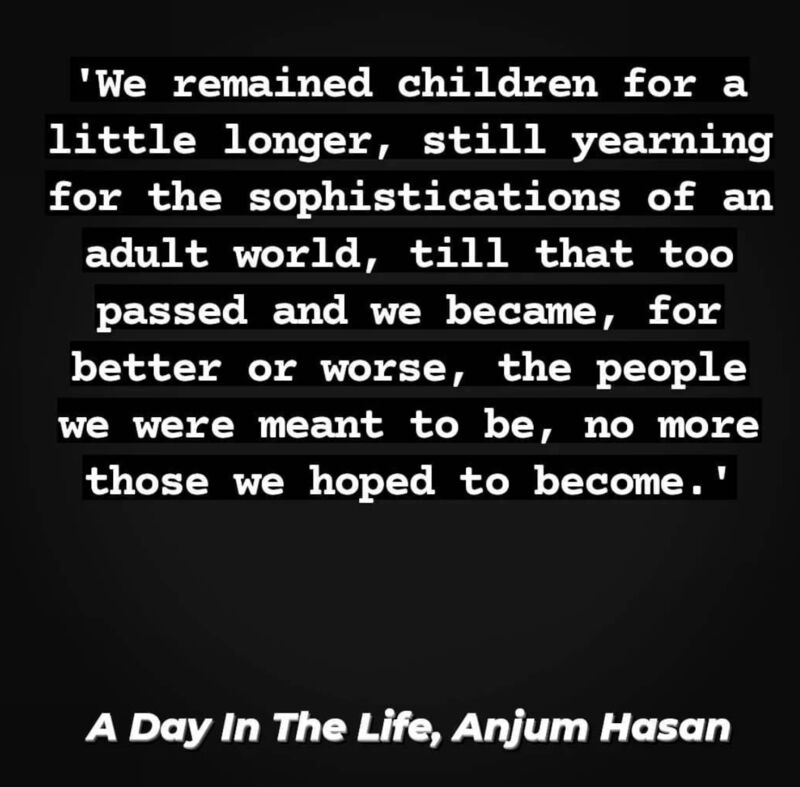Alternately: Internal Pattern Recognition: IPR? 😉
If there’s one thing that Stoicism has taught me, it is that the good fight is not with the world, but yourself. Many of the books I read and observations I try to make on family are to get a better understanding of the ‘why’ behind my thinking. Among the many things that “Behave” gave me insights on was this, and an explanation for how siblings can be very different in terms of mindset and behaviour, despite inheriting not just ‘nature’ but sharing ‘nurture’ too.
‘Another dogma was that brains are pretty much wired up early in childhood – after all, by age two, brains are already about 85% of adult volume, but the development trajectory is much slower than that. …the final brain region to fully mature (in terms of synapse number, myelination, and metabolism) is the frontal cortex, not going fully online until the mid twenties.‘
“…the brain is heavily influenced by genes. But from birth through young adulthood, the part of the human brain that most defines us (frontal cortex) is less a product of the genes with which you started life than of what life has thrown at you. Because it is the last to mature, by definition the frontal cortex is the brain region least constrained by genes and most sculpted by experience. This must be so, to be the supremely complex social species that we are. Ironically, it seems that the genetic program of human brain development has evolved to, as much as possible, free the frontal cortex from genes.”
In other words, one’s experiences until mid-twenties have a lifelong effect on the brain. Remember that time? When we went beyond the ‘safe’ habitats which had been our only experience until then? ‘It is the time of life of maximising risk taking, novelty seeking and affiliation with peers.‘ While that is happening, our brain is (broadly) moulding itself for the rest of our life. ‘…frontal cortical maturation during adolescence is about a more efficient brain, not more brain.‘ And after that, we are essentially living out the patterns that we have formed.

Life
I now have a better understanding of why I am the way I am. In that period of my life – from 15 to 25 years of age – I realised I had to make most of my own decisions. I know that’s probably the case with most people, but they often have help from parents/relatives/teachers etc. I had little assistance, and I didn’t even think of asking for help. As Arundhati said of Rahel, I grew up without a brief. I assumed this was the way it played out. But that meant I had near-zero perspectives on how much this would affect the rest of my life. On education, for instance, there was very little guidance on what/where to study. I took what came along. At this stage of my life, I begin to understand – people have their own lives. From 19-25, D was my support system. From deciding on Bangalore to financing our *just married* life, we planned everything together. She has been my rock ever since!
And so, as Peter L. Bernstein has said (albeit in the context of markets) ‘Experience shapes memory; memory shapes our view of the future.‘ My scarcity mindset, my low regard for familial bonds and (until recently) friendships, my belief that in a crunch the only person one can depend on is self (+D), and my judgment of people who cannot handle it that way – all share an origin story. It also means, as Khaled Hosseini insightfully pointed out in And the Mountains Echoed, “…most people have it backward. They think they live by what they want. But really what guides them is what they’re afraid of. What they don’t want.” This has been especially true for me on both dependence and money. Biases, decisions, actions, all come from here.
Understanding this gives me the chance to consider what I’d like to change. And then figure out how to ‘rewire’ my patterns, and think about the person I want to become, beyond nature and nurture. A work in progress. The start of a year is a good time to begin.
P.S. As there are implications on the person, so there are implications on the professional too, but that’s a post for later.
